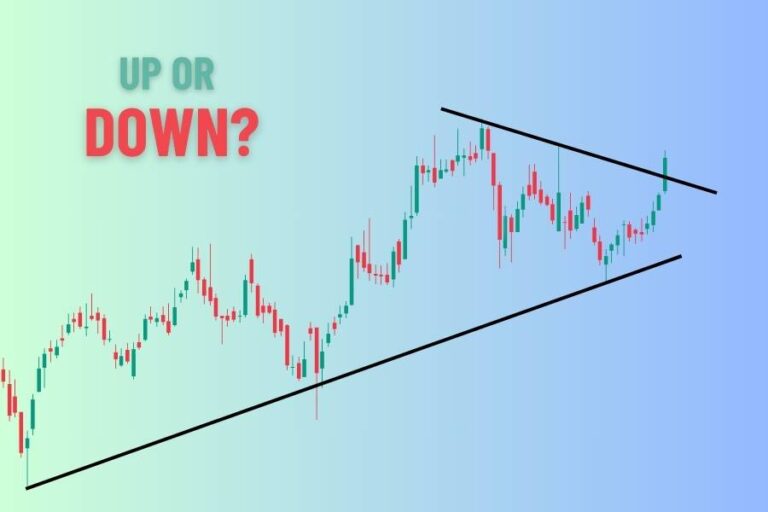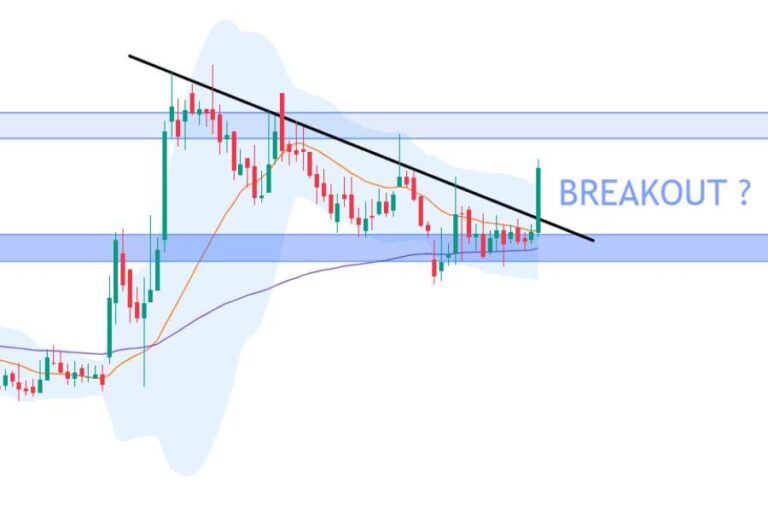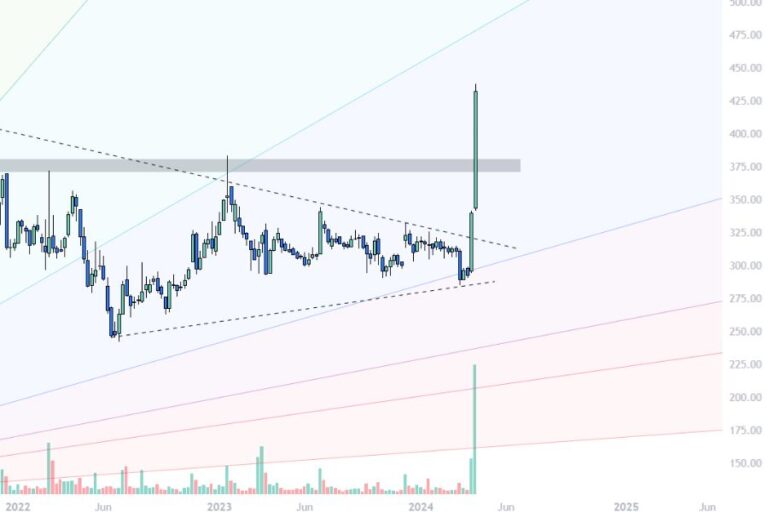
Amara Raja Batteries Analysis, Share Price Target, Latest News
Pranay
Contributor
Amara Raja Batteries Limited is an Indian company that manufactures lead-acid batteries for industrial and automotive applications. It operates in the Electrical Equipment & Parts industry within the Industrials sector. In the upcoming board meeting on 23 May 2023, the comapny is set to share its Audited results and final dividend. This brings us to the question if its the right time to invest in AMARAJABAT. Lets deep dive into technical and fundamentals of Amara Raja Batteries along with the battery sector market outlook in India.
Table of Contents
Battery Industry Overview in India
The battery market in India is on a soaring trajectory. It is growing with a projected compound annual growth rate (CAGR) of over 15% in the coming five years. This remarkable surge is primarily driven by the escalating demand for electric vehicles (EVs). Various energy storage applications further supports this. The Government of India is also set to make substantial investments in lithium-ion battery (LiB) manufacturing. Nevertheless, it is essential to acknowledge that critical battery storage technology remains an expensive import.
Technical Analysis of Amara Raja Batteries

- The stock has a 1-year return of 24.46% and a year-to-date return of 13%.
- The 5-year return is -3.9%, while the 10-year return is 11.28%.
- The stock’s volatility over the past year is 28.6%. Over the past 5 years is 31.06%, and over the past 10 years is 31.38%.
- The maximum drawdown is -86.22%.
- The stock’s beta is 0.8658, indicating it is less volatile than the market.
- The 52-week high is 668.15 INR, and the 52-week low is 435.55 INR.
- The 50-day moving average is 589.84 INR, and the 200-day moving average is 571.66 INR.
Fundamental Analysis of Amara Raja Batteries
Key metrics
- The company has a market capitalization of 109.61 billion INR.
- The price-to-earnings (P/E) ratio is 16.68, and the forward P/E is 17.92.
- The company has a dividend yield of 0.53%.
- The return on equity (ROE) for the trailing twelve months (TTM) is 12.33%, and the return on assets (ROA) is 6.99%.
- The company’s operating margin for the trailing twelve months is 8.19%.
- The company’s revenue for the rtailing twelve months is 101.40 billion INR, with a quarterly revenue growth YoY of 11.5%.
Financials
- The company’s net income for the last quarter (Q4 2022) was 2.22 billion INR, with an operating income of 3.07 billion INR.
- The total revenue for the last quarter was 26.38 billion INR, with a gross profit of 8.80 billion INR.
- The company’s total assets as of Q3 2022 were 69.45 billion INR, with total liabilities of 19.56 billion INR and total stockholder equity of 49.89 billion INR.
Earnings
- The company’s last reported earnings per share (EPS) was 11.8 INR, which was higher than the estimated EPS of 10.67 INR, resulting in a positive surprise of 10.59%.
Dividends and Splits
- The company’s last split was a 2:1 split on September 25, 2012.
- The ex-dividend date was November 15, 2022.
- The forward annual dividend yield is 0.54%, and the forward annual dividend rate is 3.4 INR.
Is it Risky to invest In Amara Raja Batteries?
Volatility Analysis
Over the past year, the stock of Amara Raja Batteries has experienced a volatility of 28.6%. This signifies that the stock price has shown significant fluctuations within this period. This may pose a higher level of risk. Similarly, over the past 5 years, the stock’s volatility stood at 31.06%, and over the past 10 years, it reached 31.38%. These figures highlight the varying degrees of price movements that you may need to consider.
Maximum Drawdown
A crucial measure of downside risk, the maximum drawdown for Amara Raja Batteries is recorded at -86.22%. This represents the largest decline in the portfolio’s value from a peak to a trough, before a new peak is achieved. It serves as an indicator of potential losses within a specified time frame. You can utilize this measure independently or incorporate it into other metrics such as “Return over Maximum Drawdown” and the Calmar ratio to assess risk-reward dynamics.
Beta Analysis
Amara Raja Batteries exhibits a beta of 0.8658, indicating a lower level of volatility compared to the overall market. A beta below 1 suggests that this investment is theoretically less volatile than the market as a whole. Consequently, the portfolio’s value is expected to be less affected by market fluctuations. However, it’s worth noting that lower volatility also implies the potential for relatively lower returns.
Opportunities for Amara Raja Batteries
India’s current battery manufacturing landscape faces several challenges. This includes heavy reliance on imported raw materials, inadequate safety standards, and limited local technological expertise. Despite these hurdles, LiB technology has outpaced lead-acid batteries in mobile and stationary applications. Contributing to this success is the Indian government’s mandate for domestic battery pack production and the allowance of 100% foreign direct investment (FDI) in the industry.
One advantage that India possesses is its cost competitiveness, attributed to low labour and power expenses. In fact, in 2020, India boasted the lowest cell manufacturing costs among nations such as the United States, European countries, China, and South Korea
Growing demand of Lithium Ion batteries
Looking ahead, the demand for LiB is going to witness significant growth, particularly in the automotive sector, which is projected to account for a substantial 90% of the overall LiB demand. Non-automotive applications will also experience remarkable growth, spanning diverse areas such as telecom towers, data centres, grid-scale renewable energy integration, and rooftop solar installations.
Given the limited availability of key minerals and metals within India, battery recycling has emerged as a potential solution to meet the surging LiB demand. Through effective recycling processes, it is possible to recover an impressive 80-90% of crucial elements like lithium, cobalt, nickel, manganese, and graphite
Other promitenet players in the segment
Realizing the full potential of the battery industry in India will require significant investments in research and development. These investments should focus on enhancing the utilization of locally available raw materials and advancing the design expertise for Battery Management Systems (BMS). In the cell industry, dominant players such as Exide, Amara Raja, Reliance, and Adani are expected to establish vertically integrated gigawatt-scale LiB factories, further driving the industry’s growth
The battery industry in India is poised for remarkable growth, fueled by the demand for EVs, energy storage applications, and renewable energy integration. By addressing challenges, fostering innovation, and setting strong standards, India can emerge as a global leader in battery manufacturing, supporting its transition to a sustainable and electrified future
Also check price target analysis
Share this insight
Spread the Alpha
If this analysis helped you, pass it along to your trading desk or community.
Related Articles
More ideas that align with your trading playbook.

Amber Enterprises (BSE: 540902): Bullish Flag Pattern— Is the Upward Momentum Set to Continue?
Amber Enterprises (NSE:AMBER) (BSE:540902) is a small cap stock with MCAP of 15,364 crores and operates in the consumer durable sector. The…

Breakout stock for Swing Trade – Garware Technical Fibres (NSE:GARFIBRES)
Garware Technical Fibres Ltd. (NSE:GARFIBRES) (BSE:509557) works in the textile domain and is a leading manufacturer of technical fibres like fishing and…

Hindustan zinc rises before earning concall, Should you hold?
Hindustan Zinc which is listed on NSE under ticket (NSE:HINDZINC) marked a new all time high on April 12, 2024. The stock…




Your writing style is so engaging and easy to follow I find myself reading through each post without even realizing I’ve reached the end